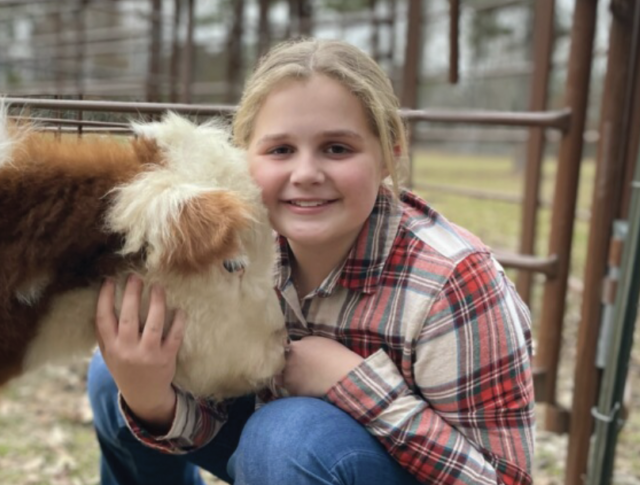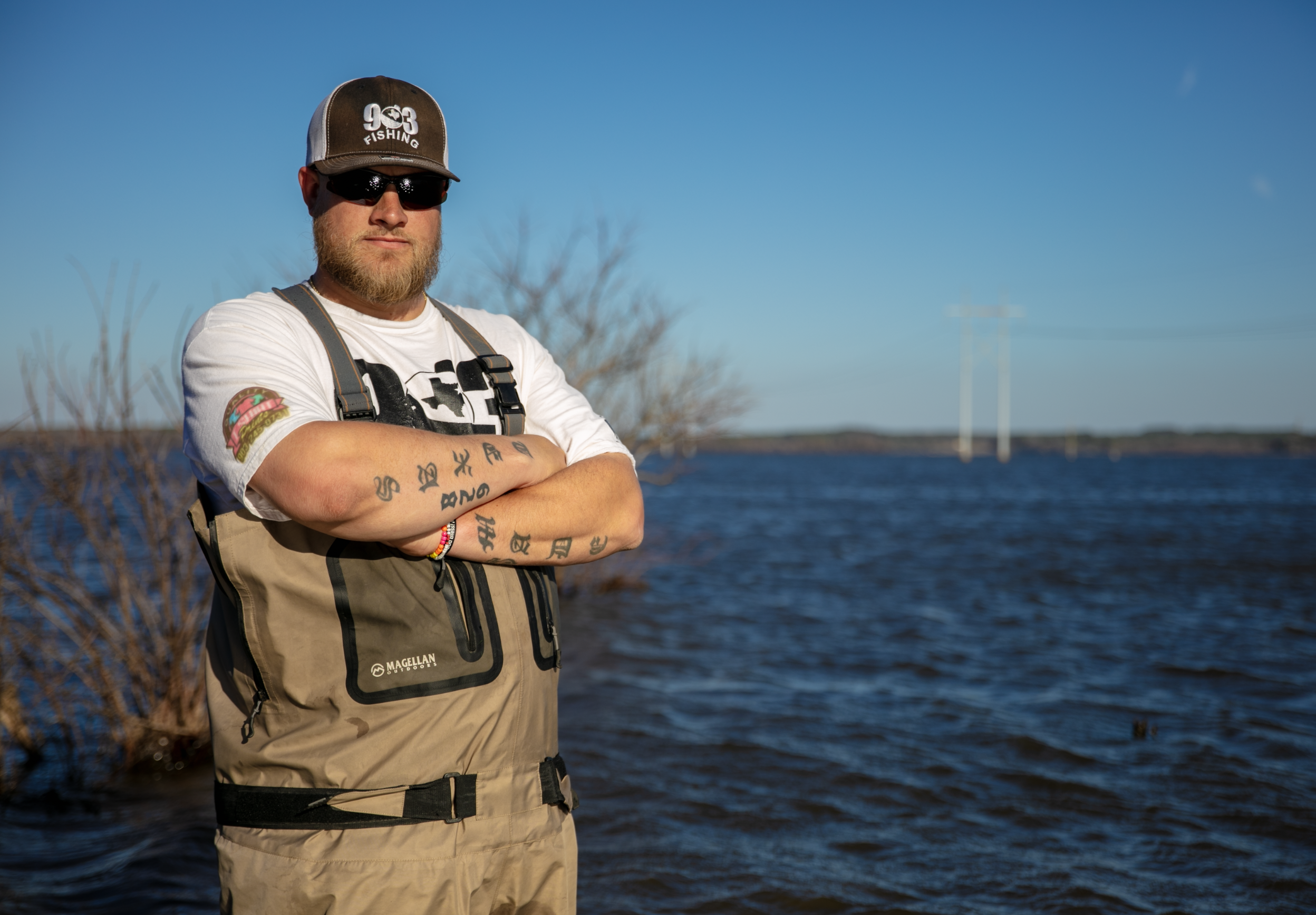by Kelly Reeves
Ranchettes and small farms have become a hot commodity in the rural southern states over the last few years. With the uncertainty of the Covid-19 pandemic of 2020, it also spurred the desire for many families to move away from urban life and seek some degree of self sustainability.
This helped to drive the increase in families itching to purchase the small acreage rural properties. These small properties range from five to fifteen or twenty acres and offer the new owner a chance at farm life or homesteading. These small properties offer the owner some of the benefits of owning a farm or ranch without the enormous price tag, maintenance costs, or responsibility of a large property.
What better for the mini farm than mini farm animals? These small farms, with the help of social media, have grown the demand for miniature cattle to stock them. It seems you can’t open any form of social media without seeing pictures and videos of cute, thirty-pound mini calves running to the bottle or sitting in the lap of a child. There is no denying the cute factor of these small cows, especially the calves but, these compact cattle are also a viable source of high quality beef, just as the full-size cattle. In these times of rising beef prices at the grocery stores, concern of the origin of the foods we eat, and the improved quality of home grown beef, many new farmers have decided to raise their own. Though not the quantity of an angus feeder steer, a grown mini steer will produce enough beef to last a family of four for several months. That’s not their only benefit. There are miniature dairy breeds that will allow the small farmer to produce their own milk, butter, and yogurt. With the fresh milk and home-grown beef, you are half way to self sufficiency. Either will allow for an agricultural tax exemption on the farm property in most places. Amy Tucker of central Arkansas bought her first mini cows during the Covid pandemic. “I was required to work from home during the pandemic and without my daily commute to the city, I found a lot of free time on my hands. My eight-acre pasture was fenced, but void of animals, so I bought a mini Dexter bull and three cows. The cows are very loving and sweet and, I guess I’ll admit, are pets. I do however sell the calves, but am particular who I sell to. The cattle have taught my kids the responsibility of taking care of them and allowed them to see the miracle of birth. Almost four years later I still work a corporate job from home and have added a mini Jersey to my herd that we milk daily. I wouln’t trade farm life for anything.” said Amy.
The mini cattle are about one-third to one-half the size of typical full-size cattle. It is simple mathematics. The mini cattle eat less forage than full size cattle, therefore more animals can graze the smaller property. Josh Hartley, owner of Wildwood Creek Farms in Crossett, Arkansas, said, “One of the beauties of ranching mini cattle is the need for much less land.” Their small size allows the property owner to maximize the amount of cattle they may raise on the smaller acreage for whatever their intended purpose. While a standard size cow typically stands 54 to 60 inches at the hip and weighs 1200 to 1500 pounds, a mini stands 36 to 42 inches at the hip and can weigh 400 to 800 pounds. Due to the small size, the mini cattle require much less space, and are far less intimidating for the novice rancher. This is quite a benefit in itself, but add to it the less expensive fencing, smaller trailers for transportation, smaller barns and working pens, the ease of working them, lower feed costs, and … the “cute factor.’ The cute factor comes into play when it’s time to market your calves.
Mini Cattle As Pasture Pets
If you aspire to be a cow cuddler this is certainly an achievable goal. There’s not many things on this planet any sweeter than a fluffy baby mini calf but remember, they will soon be 400 pounds or more. If they are raised in a gentle atmosphere, they will usually be sweet and gentle cows. Many are as friendly as a house dog and love getting attention. Although they are a commitment and require regular care, other than room to roam and enough quality grazing space, they really don’t require an exceptional amount of care.
The mini cows are small, adorable little cows with great dispositions. Of course they make good pets if that’s what you choose, but however sweet and cuddly they are, they are still cows. Let them live like a cow, not a yard dog.
Unconventional Qualities
Mini cows are now commonly being used as service animals. Their sweet disposition and cuddly, cute faces lend them to being perfect for interaction with the disabled population. The benefits of horse riding therapy have been well known and in use for many years, but not everyone is able to ride. The therapy provided by animal interaction is now available to those with severe disabilities. Sheila Higginbotham of S and M Ranch in Texarkana, Arkansas has provided mini cows for wheelchair bound and autistic children. “It was a great success. The children loved being with the cows and they just put a great big smile on their faces.” Sheila said.
Mini cows are also being raised and shown in 4H and FFA programs. They make great first time projects for the beginners, and allow kids with less land available to enjoy showing cattle who might not otherwise be able to.
Beef Minis
There are many options in the mini beef cattle world. Mini Herefords, Lowline Angus, Belted Galloways, and Dexters all are good options for raising pasture protein. The hard part here is not getting too attached to the freezer fellows. Never name one!
A mini steer is much easier to handle when it comes time for butchering and still provides enough meat to sustain the average family for several months. The smaller size eliminates the need to find someone to share the meat and cost with. The smaller size almost eliminates the need for a commercial butcher as the processing is quite easy. Many deer hunters do it every year.
Dairy Minis
Mini dairy cows are a great addition to a mini farm. A standard size milk cow can give six or more gallons of milk each day. That’s great for a dairy operator but maybe not for the backyard farmer. A family of four can only use so much milk. What do you do with the excess? A mini milker will generally give a gallon to a gallon and a half of milk each milking. This is plenty for the average family and allows for enough to make cheese, butter, yogurt (old timers called it “clabber”), or ice cream, and some to share with friends and neighbors, or sell for profit. Mini Jersey and Holstein cattle are great milk producers just like the full-size cattle.
Mini Drawbacks
There are a few cons to raising mini cattle. The initial purchase prices are generally somewhat higher than their full size counterparts. Their small size also is less of a deterrent to predators. Coyotes, bobcats, stray dogs and other predators may find a mini calf to be easy prey. Sometimes the mini breeds are more apt to have difficulty birthing. Sure, these are some things to think abou,t but none are deal breakers. I think the pros far outweigh the cons.
If you have been considering buying mini cattle for your farm, I encourage you to visit a reputable breeder and learn the ins-and-outs first hand. There are many different mini breeds to choose from with many different qualities and traits. Make certain to educate yourself with comprehensive research before the purchase and be prepared before their arrival. Though they are not for everyone, there is definitely a place in the agricultural world for mini cattle. To answer the question, “Pets or protein?” is easy. They are both, or either. Whether your reason for owning mini cattle is for homesteading, showing, use as a service animal, or a family pet, or protein, it appears they are here to stay.












